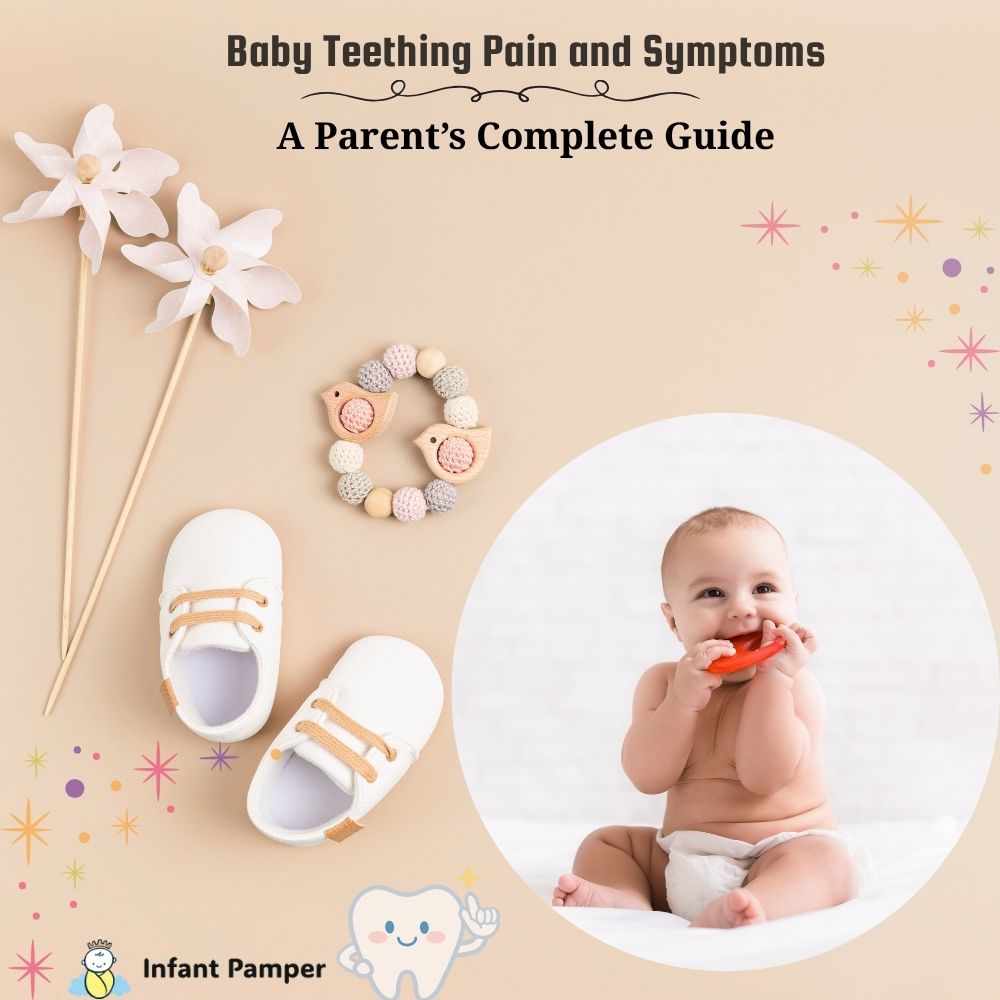By a caring mom at Infant Pamper
When your little one’s first teeth start pushing through, it can feel like a storm of drool, fussiness, and sleepless nights. Every parent wants to help their baby through the discomfort of teething—so let’s walk through what’s normal, what’s not, and how you can offer relief every step of the way.
What is Teething?
Teething is the process when your baby’s first teeth (also called primary or milk teeth) begin emerging through the gums, usually between 4 to 7 months of age. While exciting, it can cause discomfort, irritability, and some classic symptoms for many babies.
Common Symptoms of Teething
- Excessive Drooling — You might notice your baby drools so much that bibs become a daily staple. Prolonged wetness can cause mild skin irritation around the chin or neck. [Seattle Children’s Hospital]
- Chewing or Gnawing — Babies often chew on toys, fingers, or anything they can grab to relieve gum pressure.
- Swollen, Tender Gums — Gums may look red, puffy, or sore, especially where teeth are breaking through. [NHS]
- Irritability or Fussiness — A crankier baby is normal during teething, especially at night when discomfort peaks.
- Disrupted Sleep — Sore gums may make naps and nighttime sleep more restless than usual.
- Slight Temperature Rise — A low-grade temperature (less than 38°C/100.4°F) can happen, but high fever usually means something else.
- Ear or Cheek Rubbing — Some babies rub their cheeks or pull on their ears to soothe radiating gum pain.
- Loss of Appetite — Sore gums may make feeding less appealing for a few days.
What Teething Does NOT Cause
- High fever (over 38°C / 100.4°F)
- Persistent diarrhea or vomiting
- Severe rash
- Prolonged crying or signs of illness
If these symptoms appear, contact your pediatrician—they are not normal signs of teething and may signal another issue.
How to Soothe Your Baby’s Teething Pain
- Offer Clean, Chilled Teething Rings (not frozen) or a cold, wet washcloth to gnaw.
- Massage Gums with a clean finger—gentle pressure can bring big relief. [Children’s Hospital of Philadelphia]
- Use Soft Bibs to absorb drool and prevent rashes. Barrier creams (baby-safe) can protect sensitive skin.
- Stick to Age-Appropriate Pain Relief like acetaminophen or ibuprofen (always check with your doctor first).
- Distract with Play and Cuddles—sometimes, extra comfort goes a long way!
- Choose Safe, Eco-Friendly Teethers made from organic cotton, natural rubber, or sustainable wood to support both your baby and the planet.
When to Call the Doctor
- Fever over 38°C (100.4°F)
- Refusal to eat or drink
- Diarrhea, vomiting, or severe rash
- Unusual drowsiness or inconsolable crying
Never hesitate to seek help—your instincts matter!
Gentle, Natural, and Eco-Friendly Care
Choose non-toxic teething toys, organic baby teething remedies, and soft, plant-based bibs to keep teething time both safe and kind to the earth. Simple, natural approaches can make all the difference for your baby’s comfort and your peace of mind.
Final Thoughts for Parents
Teething is a natural—if sometimes challenging—part of your baby’s development. With patience, gentle care, and a few trusted strategies, you’ll help your little one through this stage and soon see that beautiful, toothy smile. You’re not alone on this journey—rely on your instincts, your support network, and always turn to trusted resources for guidance.




